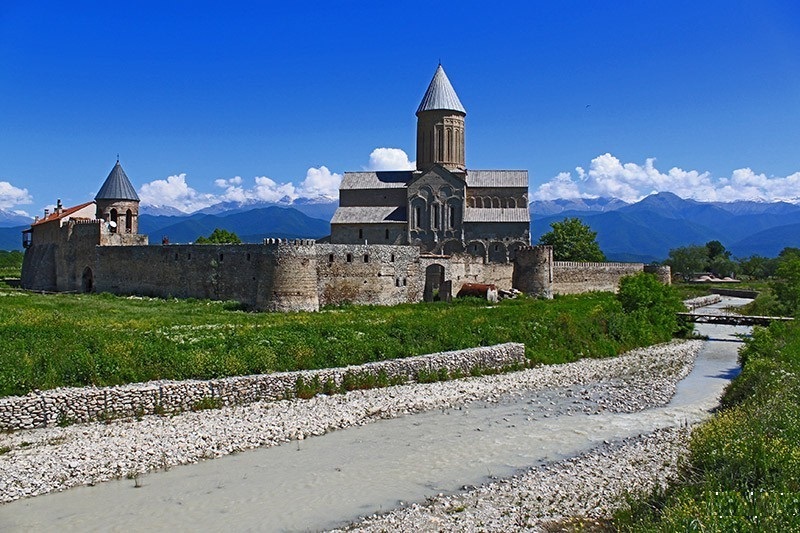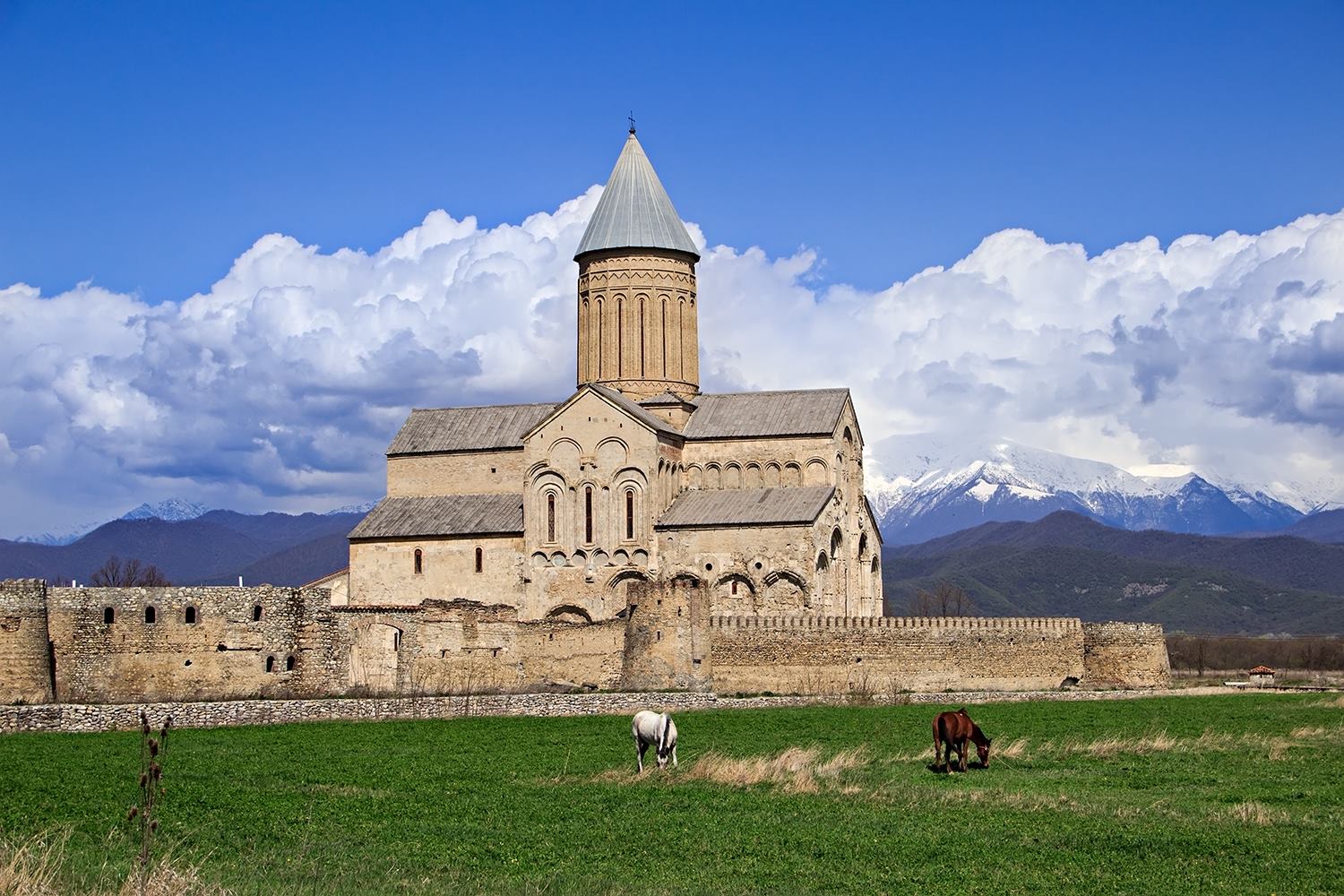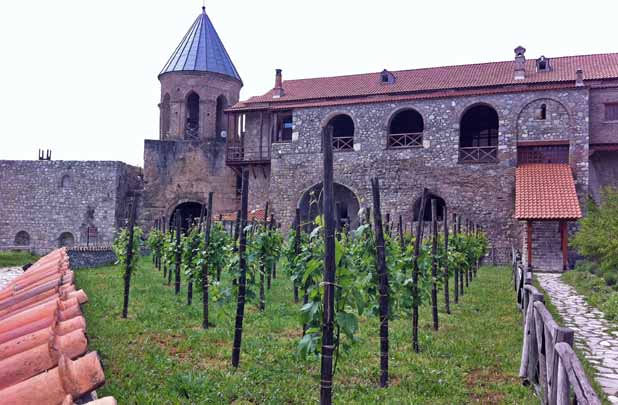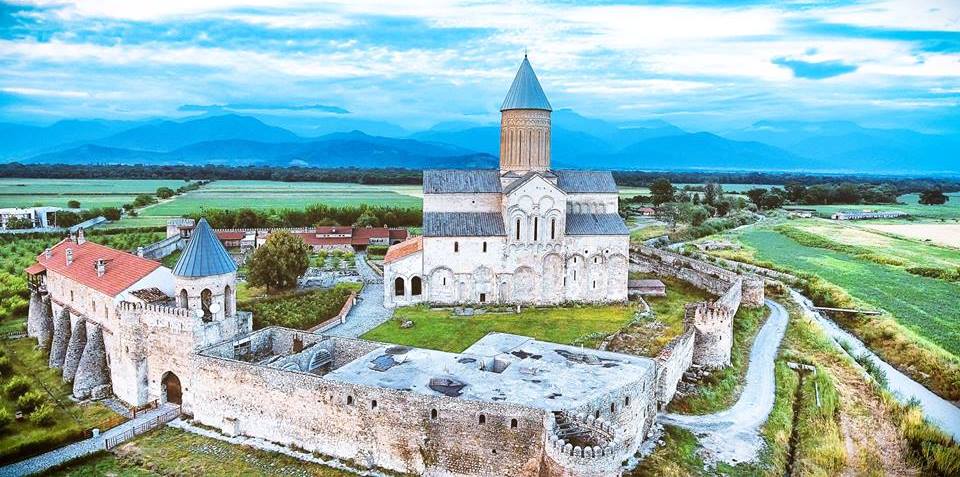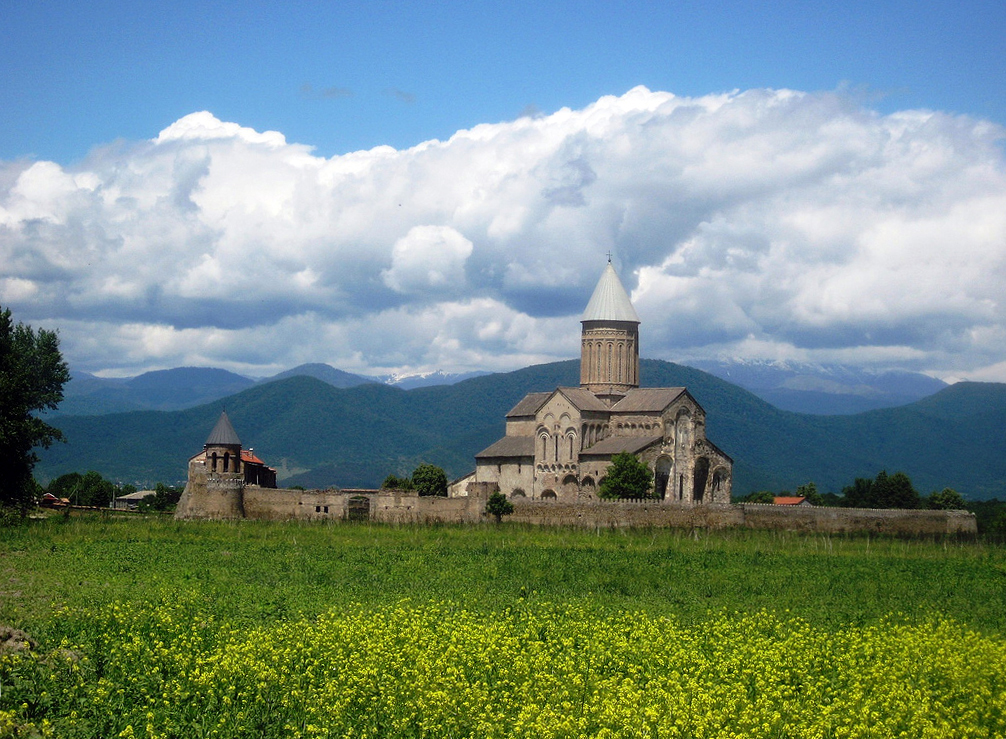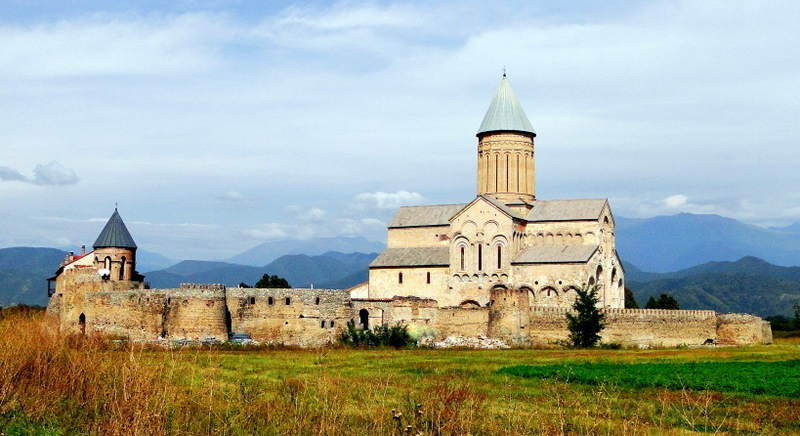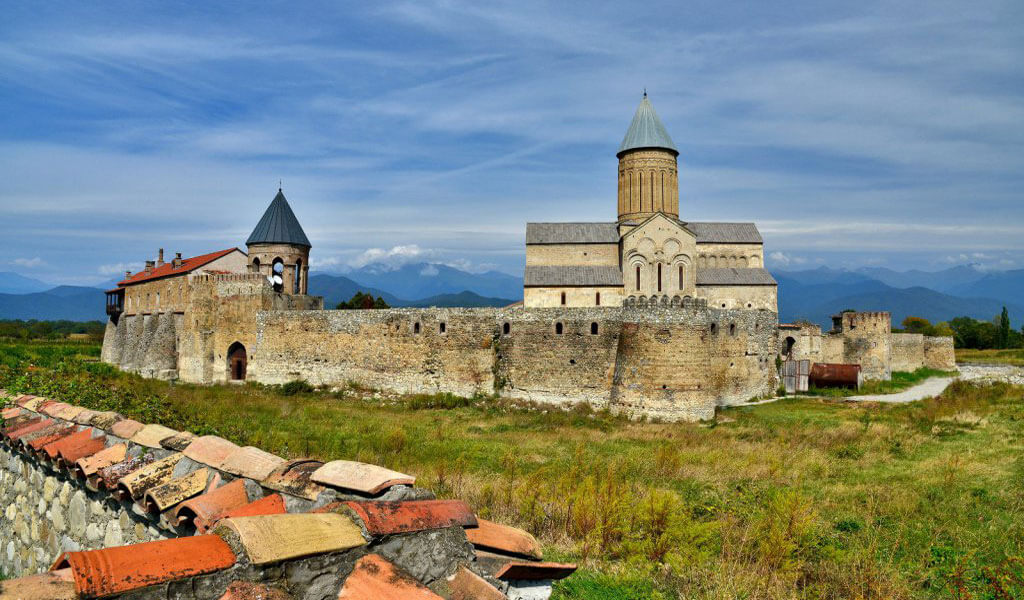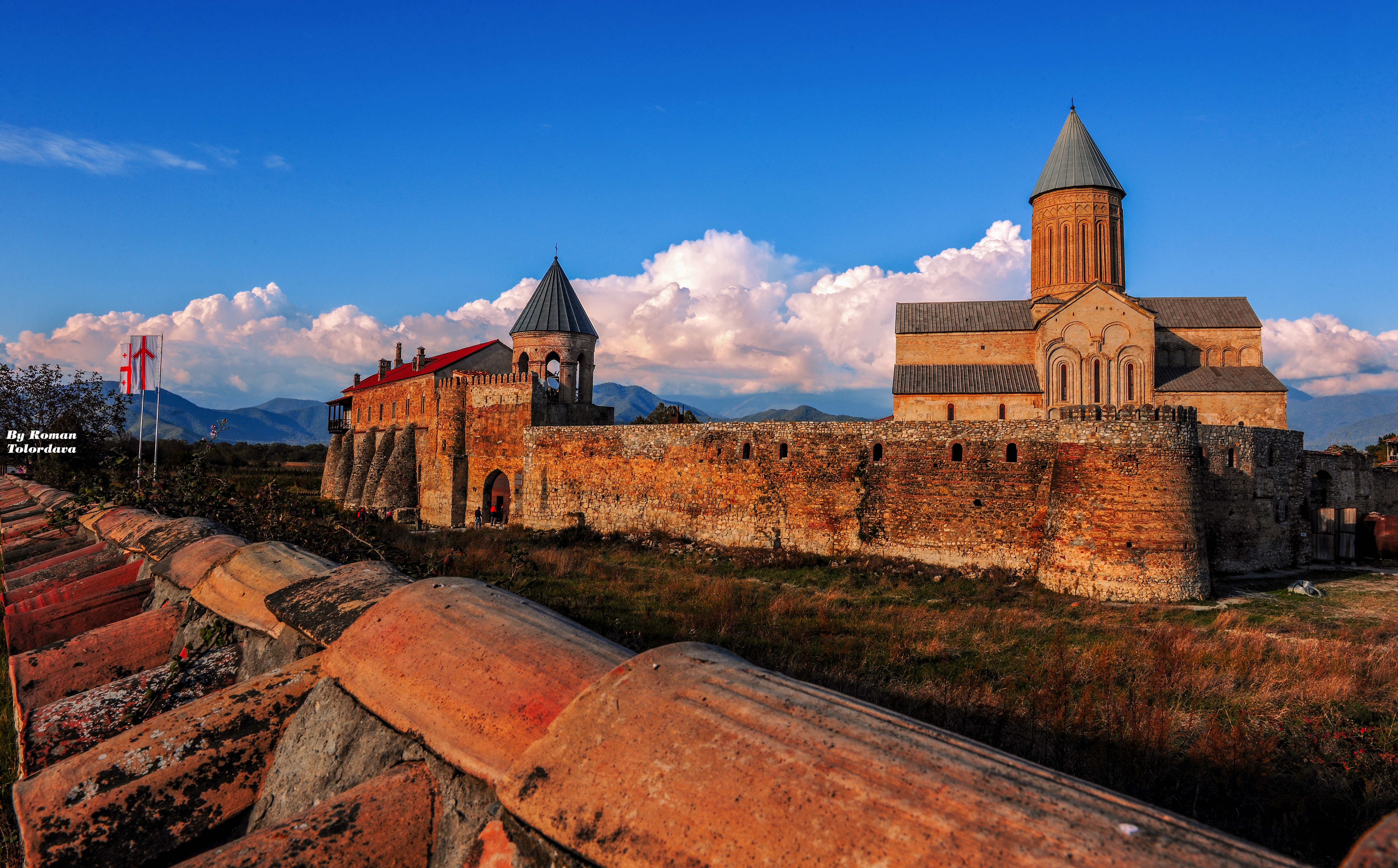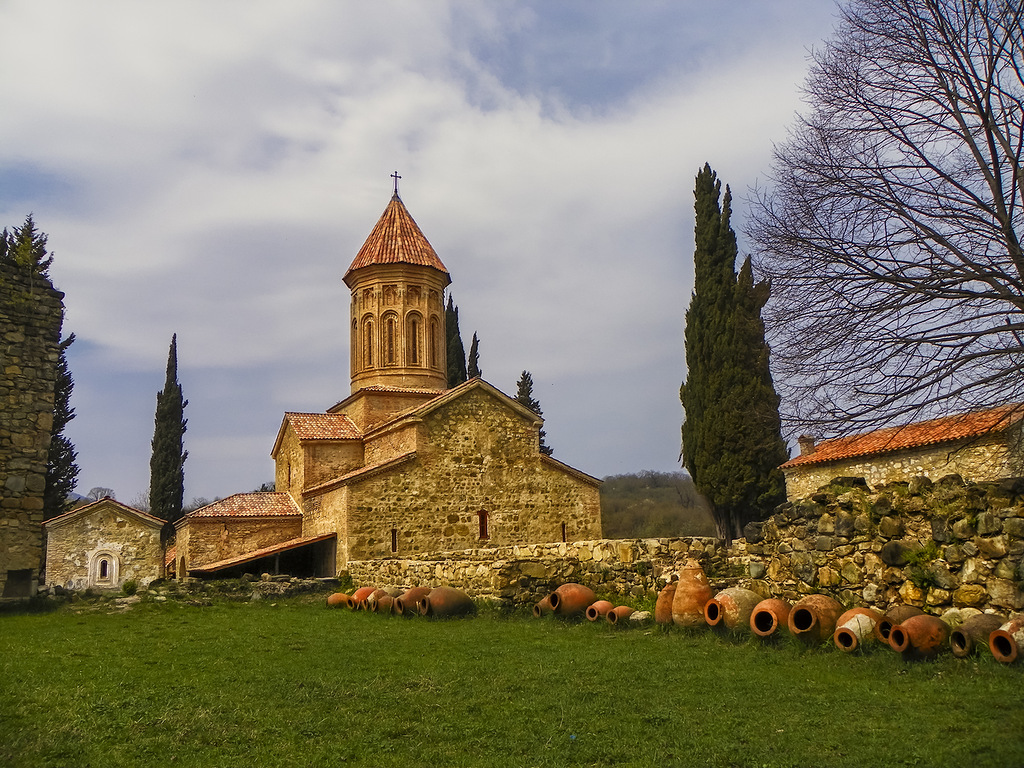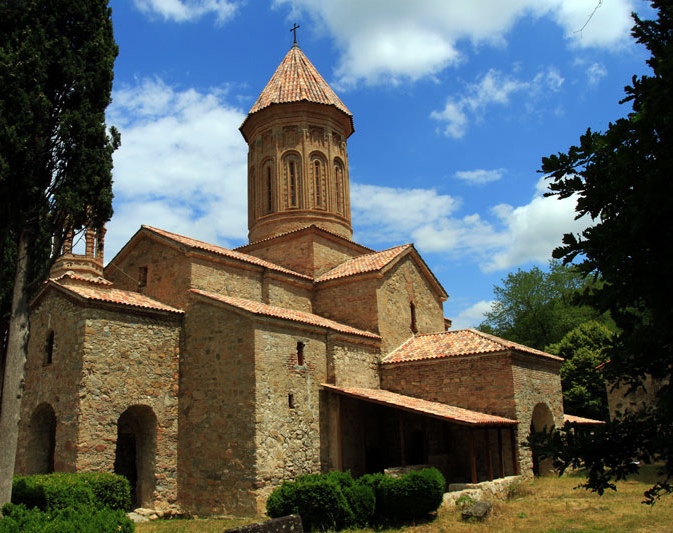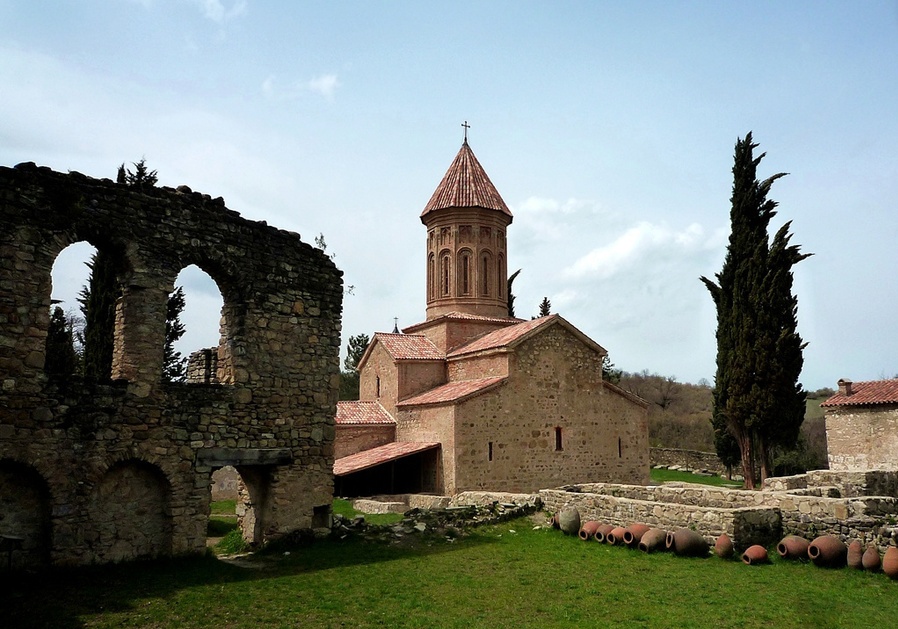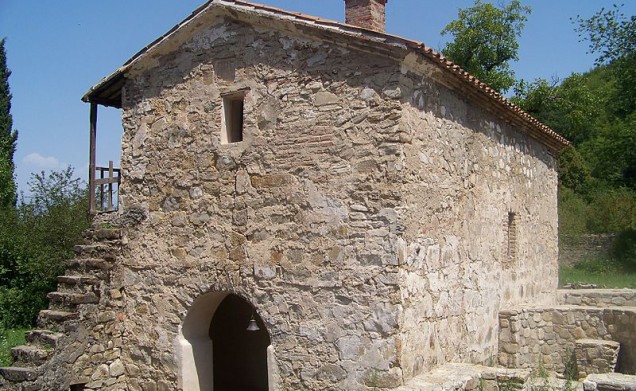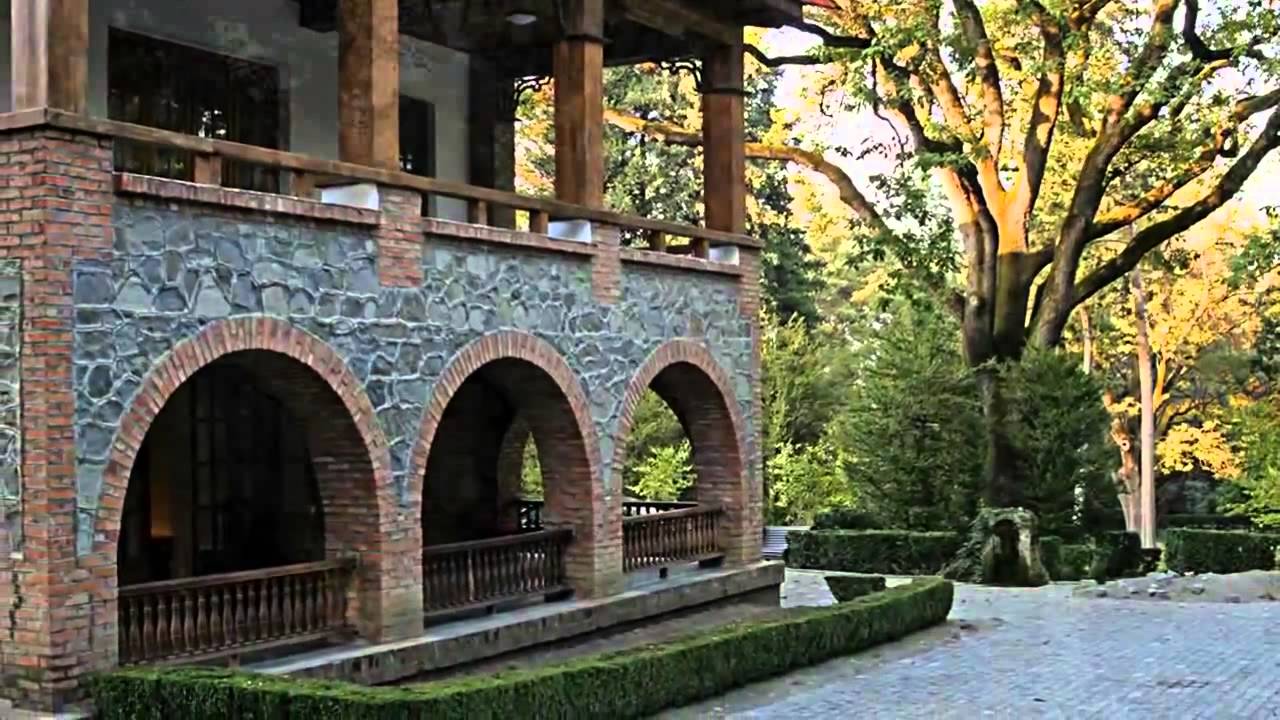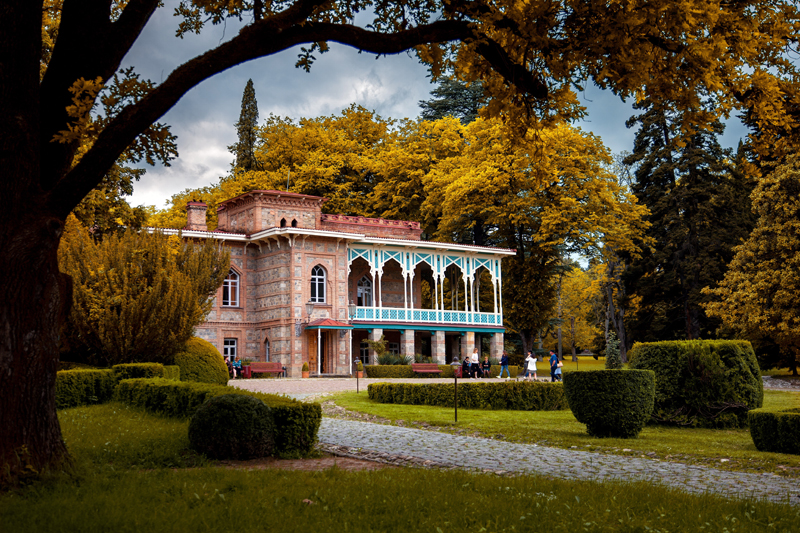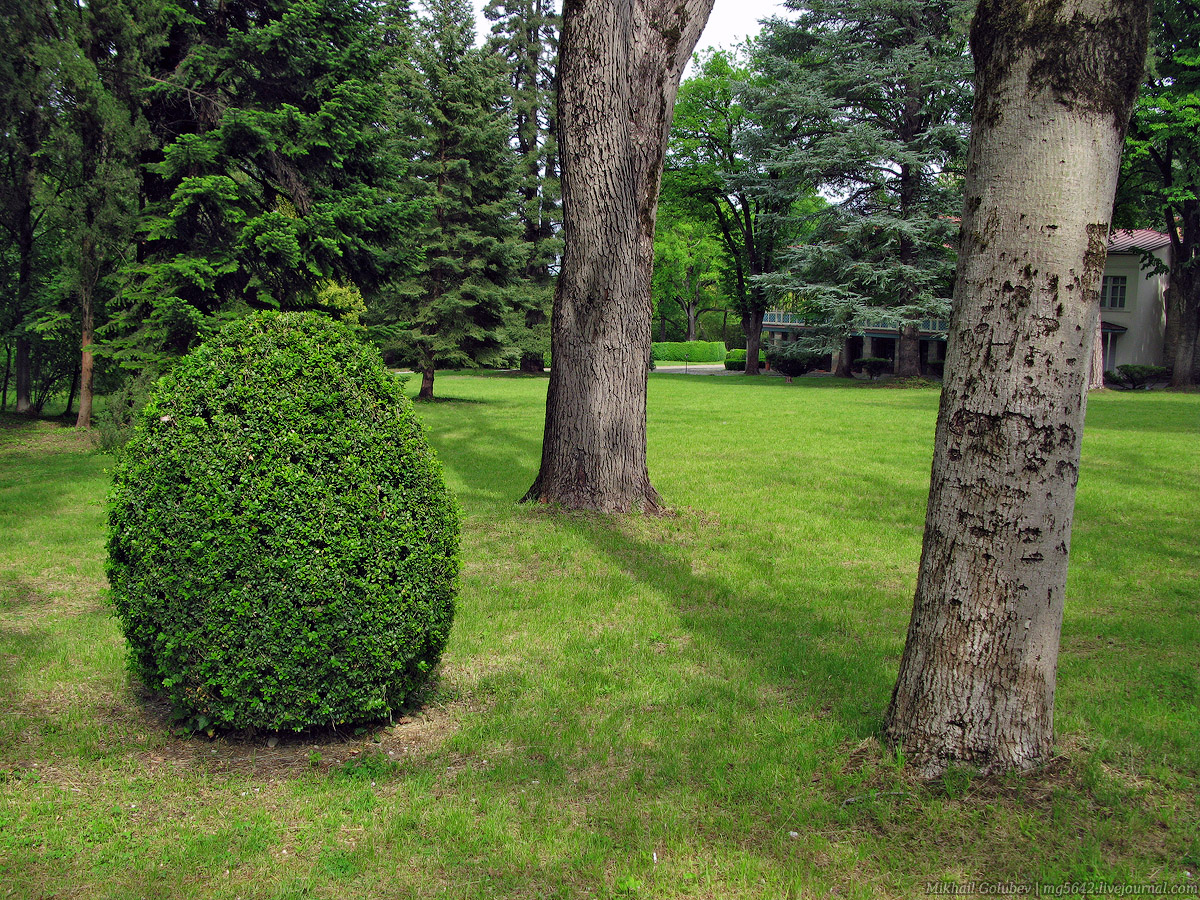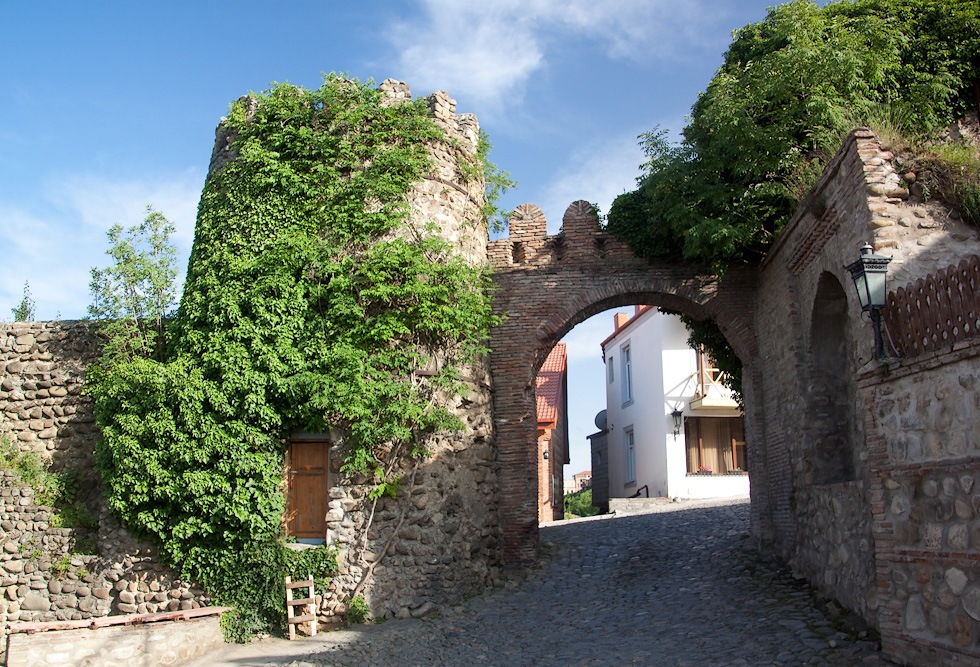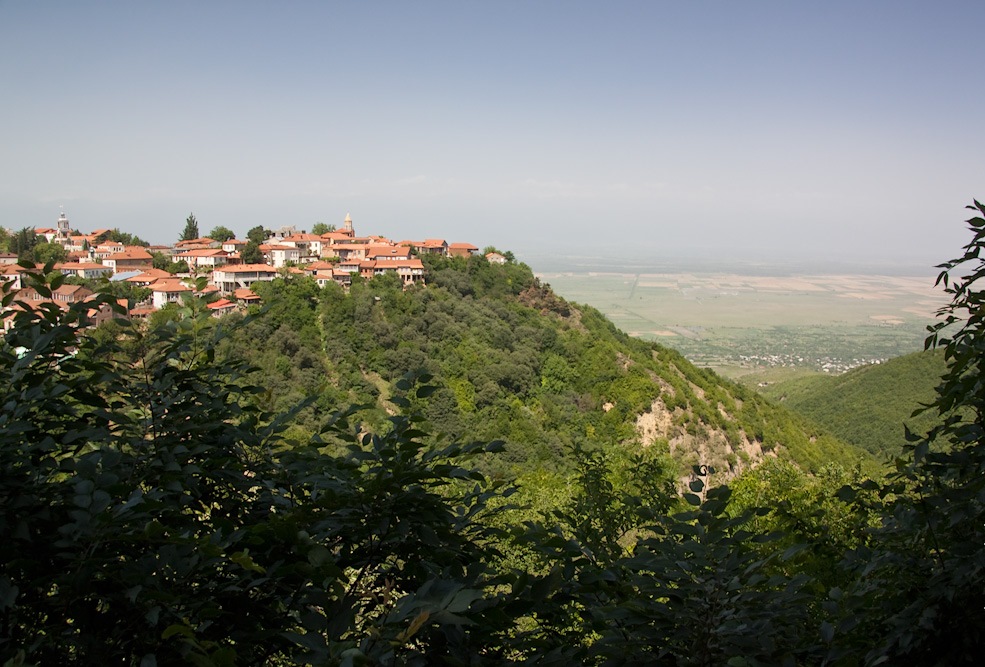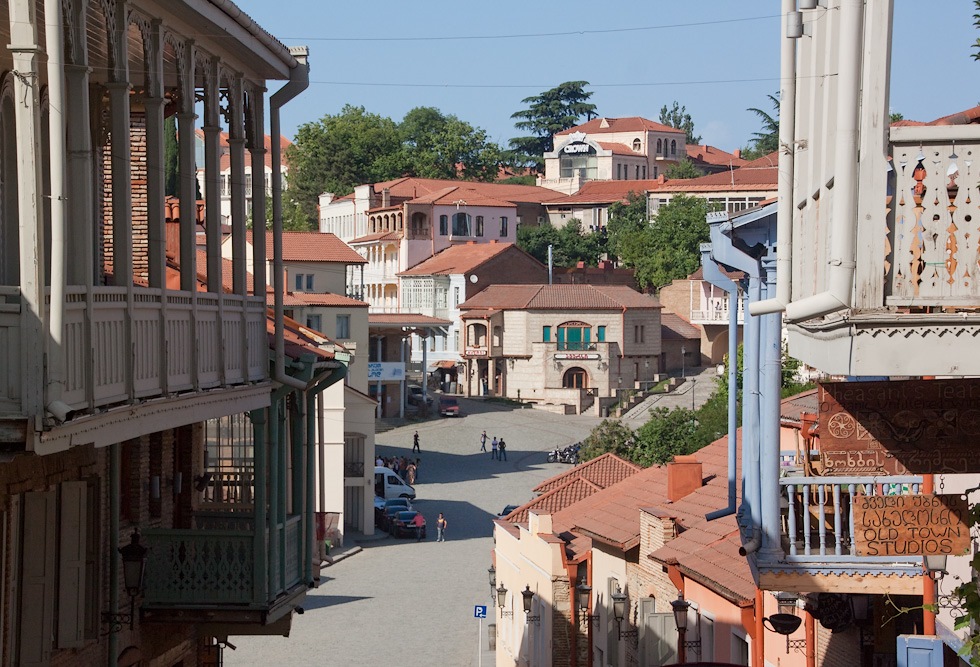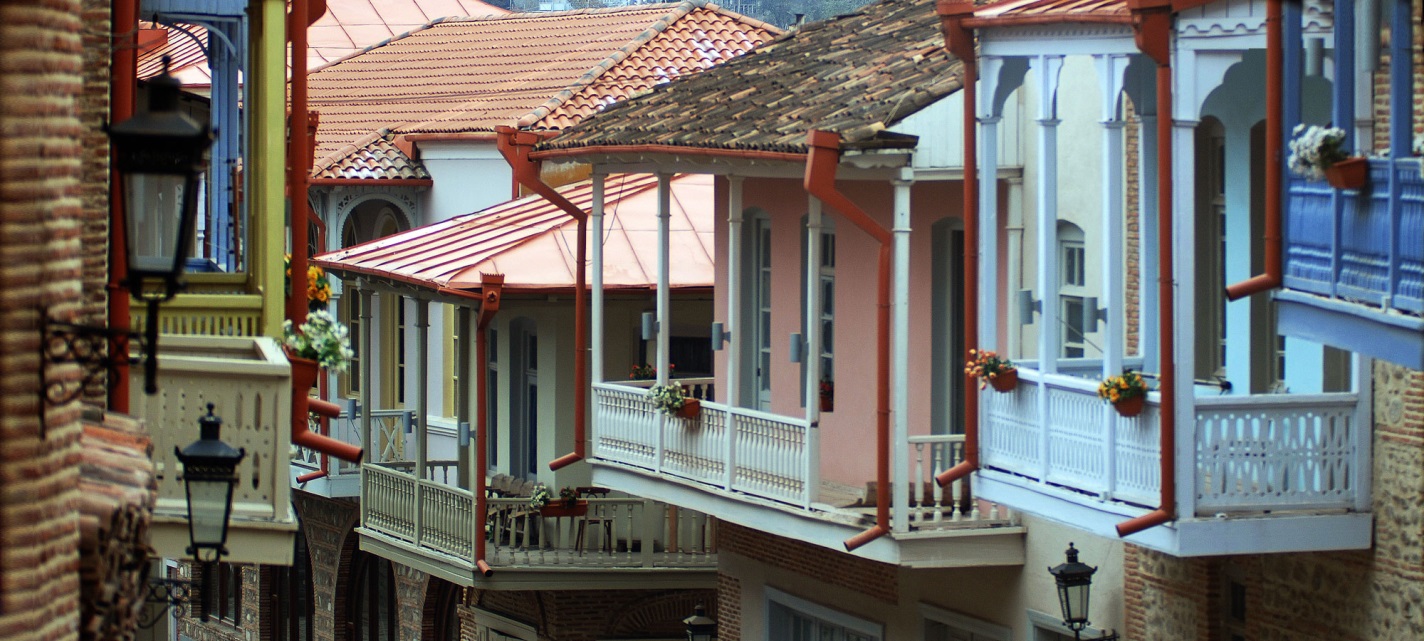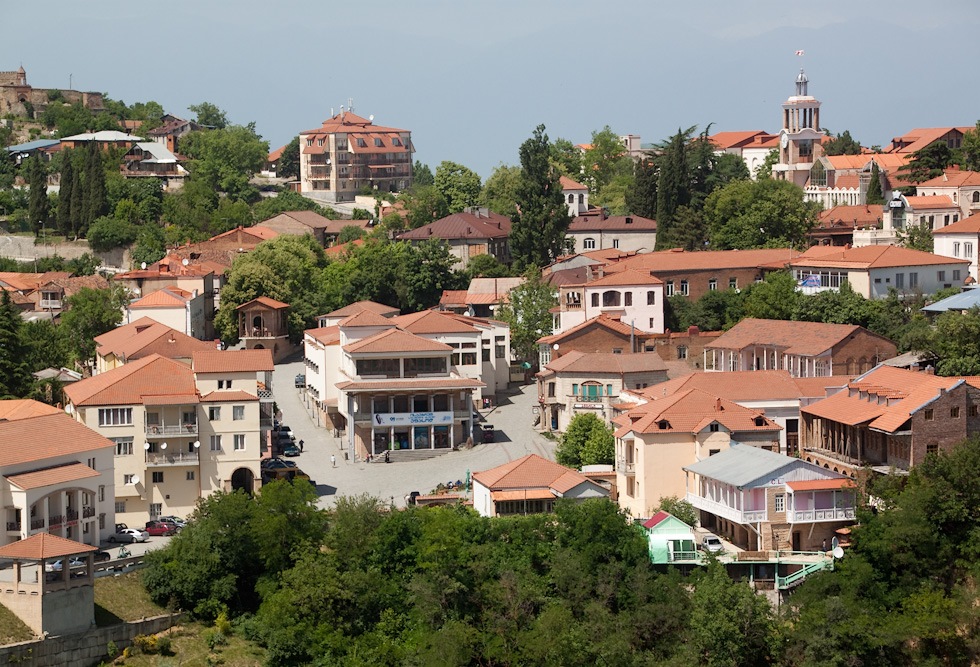TBILISI – GOMBORI PASS – ALAVERDI – IKALTO MONASTERY – NAPAREULI WINE MUSEUM – TSINANDALI MUSEUM – SIGHNAGHI – TBILISI
ALAVERDIshow galleryhide gallery
Alaverdi Monastery is a Georgian Eastern Orthodox monastery located 25 km from Akhmeta, in the Kakheti region of Eastern Georgia. While parts of the monastery date back to 6th century, the present day cathedral was built in the 11th century by Kvirike III of Kakheti, replacing an older church of St. George.
The monastery was founded by the Assyrian monk Joseph Alaverdeli, who came from Antioch and settled in Alaverdi, then a small village and former pagan religious center dedicated to the Moon. At a height of over 55 meters, Alaverdi Cathedral was the tallest religious building in Georgia, until the construction of the Holy Trinity Cathedral of Tbilisi, which was consecrated in 2004. However its overall size is smaller than the cathedral of Svetitskhoveli in Mtskheta. The monastery is the focus of the annual religious celebration Alaverdoba. Situated in the heart of the world’s oldest wine region, the monks also make their own wine, known as Alaverdi Monastery Cellar.
IKALTO MONASTERYshow galleryhide gallery
Ikalto is a village about 10 km west of the town Telavi in the Kakheti region of Eastern Georgia. It is mostly known for its monastery complex and the Ikalto Academy.
The Ikalto monastery was founded by Saint Zenon, one of the 13 Syrian Fathers, in the late 6th century. It was known as one of the most significant cultural-scholastic centres of Georgia. An academy was founded at the monastery during king David the Builder by Arsen Ikaltoeli (Ikaltoeli meaning from Ikalto) in the early 12th century. The Academy of Ikalto trained its students in theology, rhetoric, astronomy, philosophy, geography, geometry chanting but also more practical skills such as pottery making, metal work, viticulture and wine making and pharmacology. According to a legend the famous 12th century Georgian poet Shota Rustaveli studied there.
There are three churches on the monastery grounds – Khvtaeba, Kvelatsminda and Sameba. The main church, Ghvtaeba (Holy Spirit), was built in the 8th–9th century on the site of an older church (in which Saint Zenon had been buried). In 1616 the Persian invaders led by Shah Abbas I set the Ikalto Academy on fire and it ceased to exist.
TSINANDALI MUSEUMshow galleryhide gallery
Tsinandali Village, where beautiful summer residence of Georgian aristocratic poet Alexander Chavchavadze is situated. The poet refurbished the estate, constructed a new Italianate palace and built a decorative garden in 1835. It was the place where Chavchavadze frequently hosted and entertained foreign guests with music, wit, and – most especially – the fine vintages made at his estate winery (marani). Familiar with European ways, Chavchavadze built Georgia’s oldest and largest winery where he combined European and centuries-long Georgian wine-making traditions.
SIGHNAGHIshow galleryhide gallery
Signagi or Sighnaghi is a town in Georgia’s easternmost region of Kakheti and the administrative center of the Signagi Municipality. Although it is one of Georgia’s smallest towns, Signagi serves as a popular tourist destination due to its location at the heart of Georgia’s wine-growing regions, as well as its picturesque landscapes, pastel houses and narrow, cobblestone streets. Located on a steep hill, Signagi overlooks the vast Alazani Valley, with the Caucasus Mountains visible at a distance.
Signagi is located in the Kakheti region of Georgia, settled since the Paleolithic period. Signagi as a settlement is first recorded in the early 18th century. In 1762, King Heraclius II of Georgia sponsored the construction of the town and erected a fortress to defend the area from marauding attacks by Dagestan tribesmen.
As of the 1770 census, Signagi was settled by 100 families, chiefly craftsmen and merchants. When Georgia was annexed by Imperial Russia in 1801, Signagi (Signakh) was officially granted town status and became a centre of Signakh uyezd (Russian: Сигнахский уезд) within Tiflis Governorate in 1802. In 1812, Signak joined the rebellion with the rest of Kakheti against the Russian rule. During the Caucasian War, the town “was considered an important point on account of its proximity to” Dagestan.
The town quickly rose in its size and population and became an agricultural center under the Soviet Union. The severe economic crisis in post-Soviet Georgia heavily affected the town, but a major reconstruction project recently launched by the Government of Georgia and co-funded by several international organizations intends to address an increasing tourist interest and modernize infrastructure.

